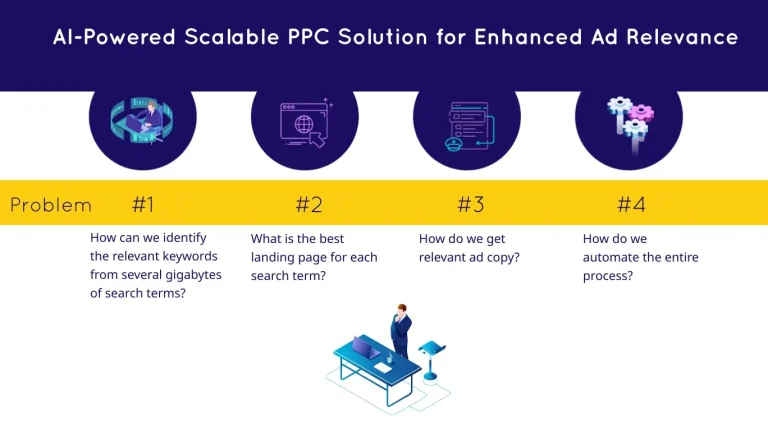Looker Studio is a Google product, designed for transforming data for insightful visualizations. However, that’s not all, it gets even more effective with regex. This function lets you create calculated fields, so you can better customize your visualizations.
In this post, you’ll learn how to use calculated fields in Looker Studio.

What is regex (Regular expressions)?
A regular expression (regex or regexp) is a character set defining a search pattern for text matching or replacement. It allows flexible, efficient text searches and replacements.
For instance, you could replace “tea” with “coffee” in a document or extract all dates using regex.
Supported by many programming languages like Python, Java, JavaScript, Perl, etc., regex syntax can vary but often uses special characters like “.”.
How to use regex for data analysis
- Data cleaning
- Data extraction
- Data validation
- Data grouping
- Data conversion
- Data visualization
How to use regex in Looker Studio
Creating regex codes can be hard, especially if you are a stranger to coding. No worries! Let’s meet with our new free tool. It automates calculated field creation for keyword classification.
According to Google, calculated fields are formulas that perform some action on one or more other fields in your data source. In this way, you can create new metrics and dimensions, transform the information in your data sources and see the results in reports.
How to use Google Looker Query Builder
Using the free Google Looker Query Builder is super easy for anyone, even if you have no programming skills. Because that’s our main focus with this tool. We automated creating regex for keyword classification. This process makes query building faster.
- Open the free Google Looker Query Builder.
- Create new categories and add your keywords. With our tool, you can create unlimited categories and keywords. However, maybe Looker Studio restricts this. Please check it.
- Get your code. That’s it. Then, you can use it in Looker Studio.
With this tool, you can skip manual regex code creation and focus on analyzing data.
Why should you use Google Looker Query Builder?
First of all, our tool offers a non-complicated user experience. The whole process only takes a few minutes (depending on your data). The more practical part is that you don’t need to learn to code. That is, the tool allows you to quickly group your keywords and turn them into a code for Looker Studio. Then you can spend your time understanding the data instead of struggling with complex code.
How calculated fields work in Looker Studio
Let’s say you have a cosmetic store and want to measure sales data.
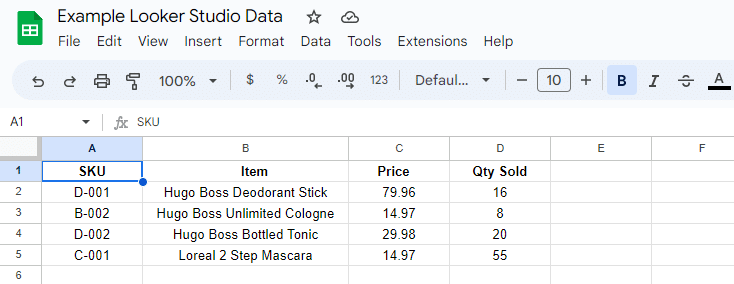
- Open Looker Studio and click “Blank Report”.
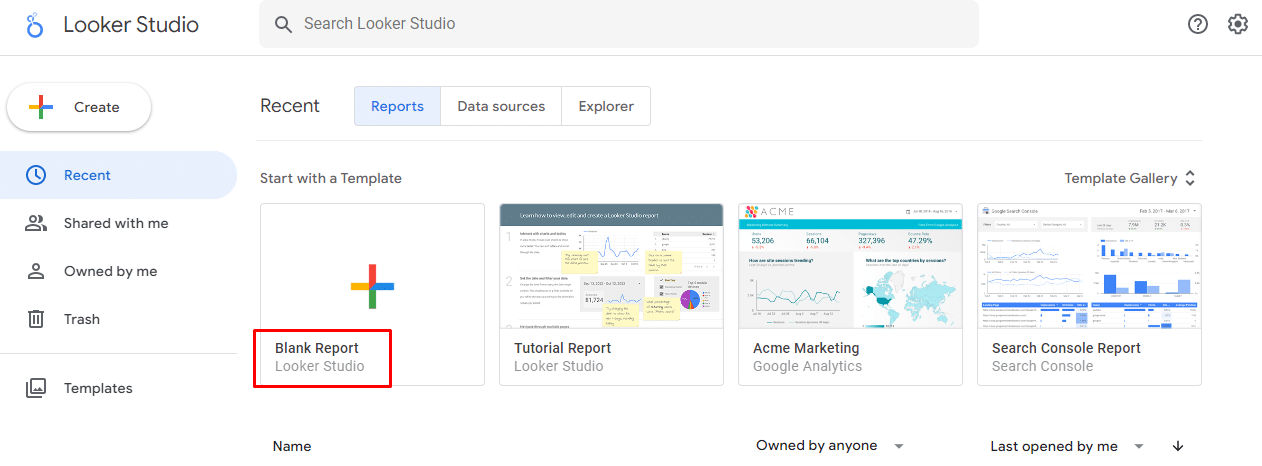
- Pick the Google Sheets connector.
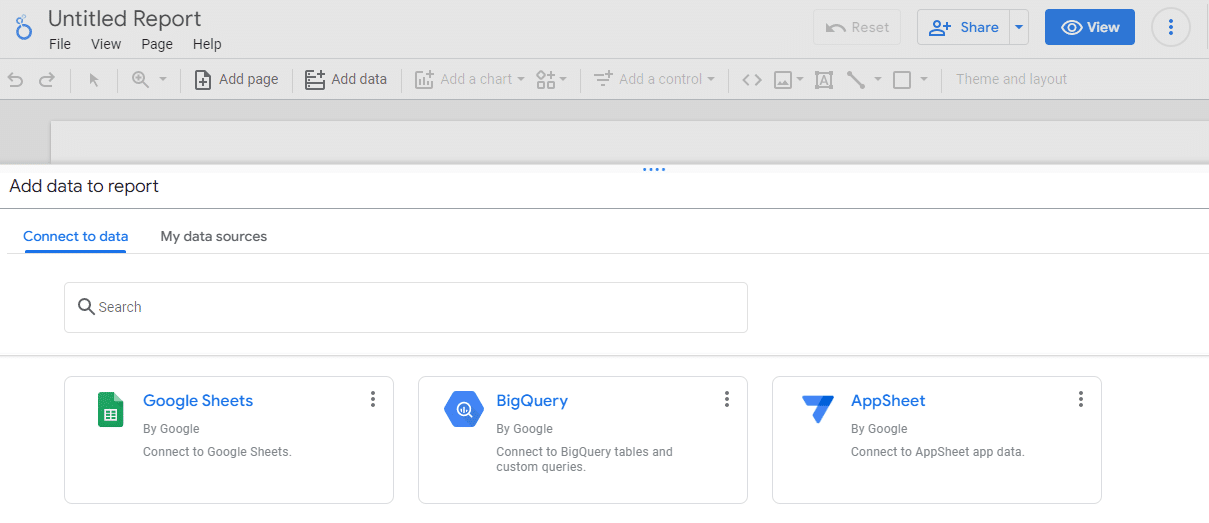
- Upload your Google Sheets data. Connect your Google Drive with Looker Studio. Select your data from Drive. Leave the default options selected. And click Add.
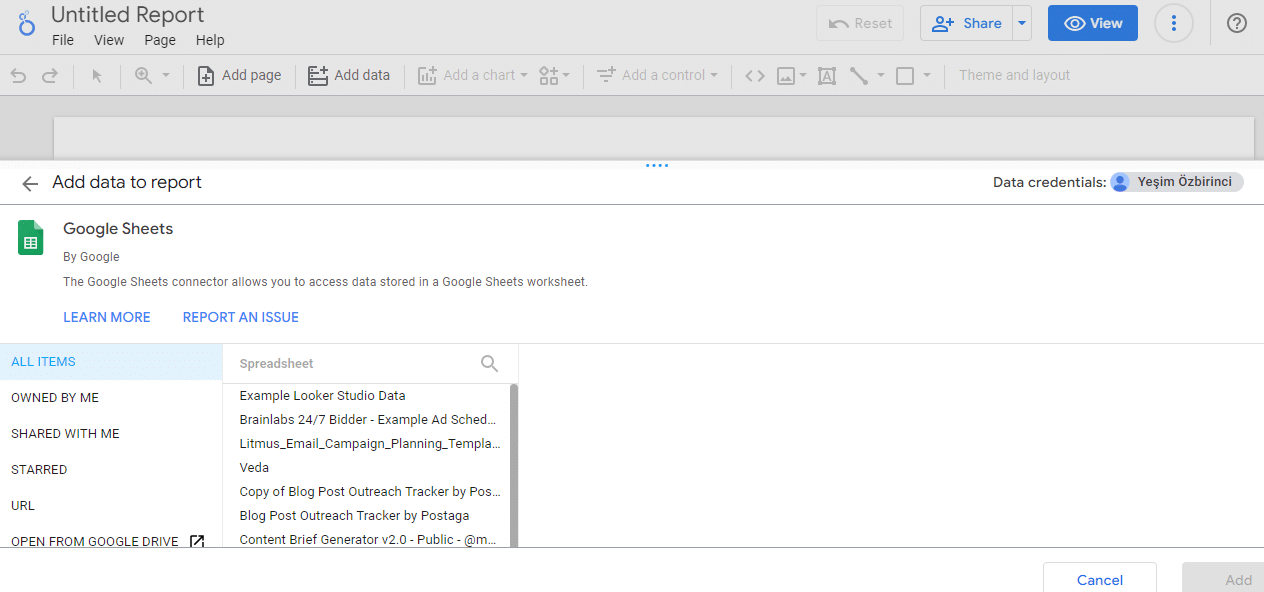
- You can change the position of metrics and dimensions in the table. Just select the column on the right side (under Dimensions and Metrics) and drag it to another row.
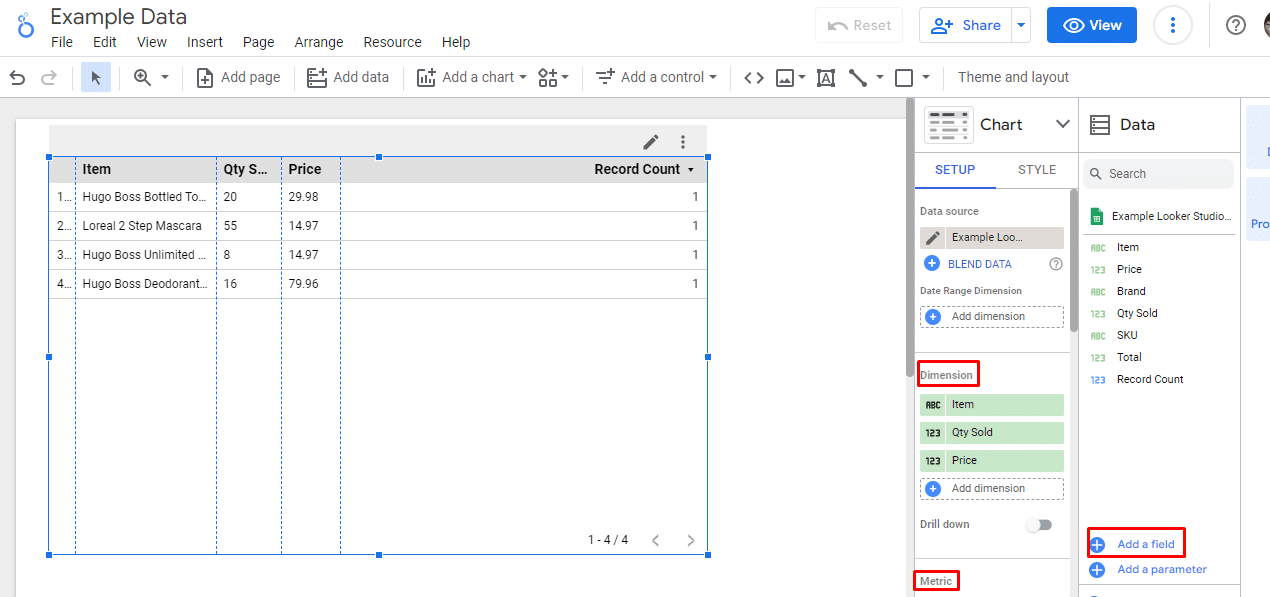
- Click on “Add field” in the bottom right corner to create a calculated field.
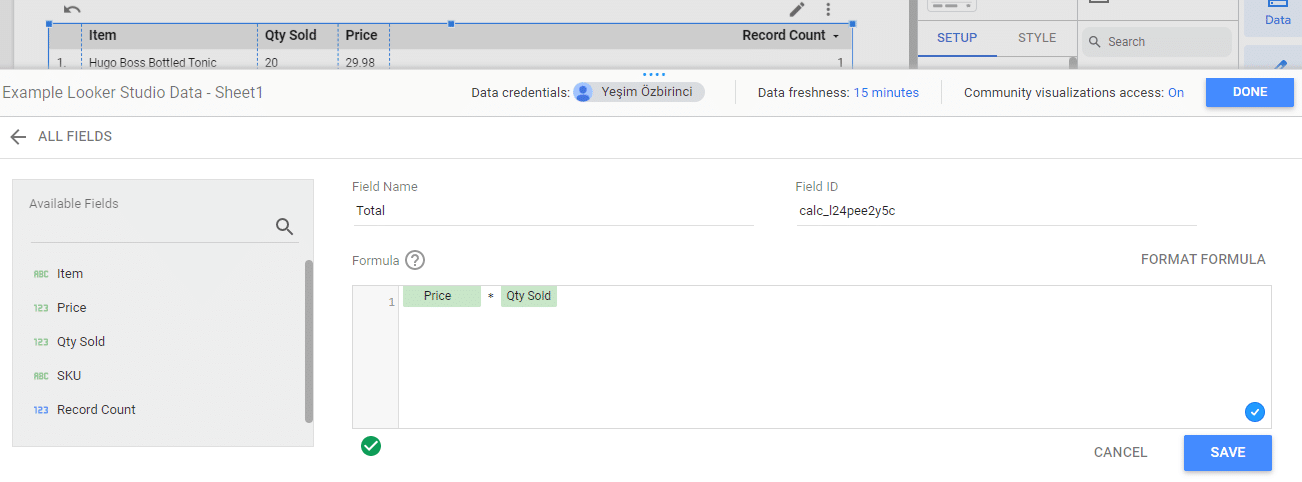
- Let’s say you Let’s give an example of how we can use this newly added “Brand” field and how we can benefit from it. We may need to see aggerated numbers of our cosmetics data. For example, how many products we have for each brand or what is the total prices for the related products. It’s very simple: we just need to add the dimension “Brand” and the metric “Total” or “Record Count” with the total as aggregated behavior. To create “Brand” colum, click on “Add a field”. Write “Total” in the “Field Name” and paste the following code: Price * Qty Sold
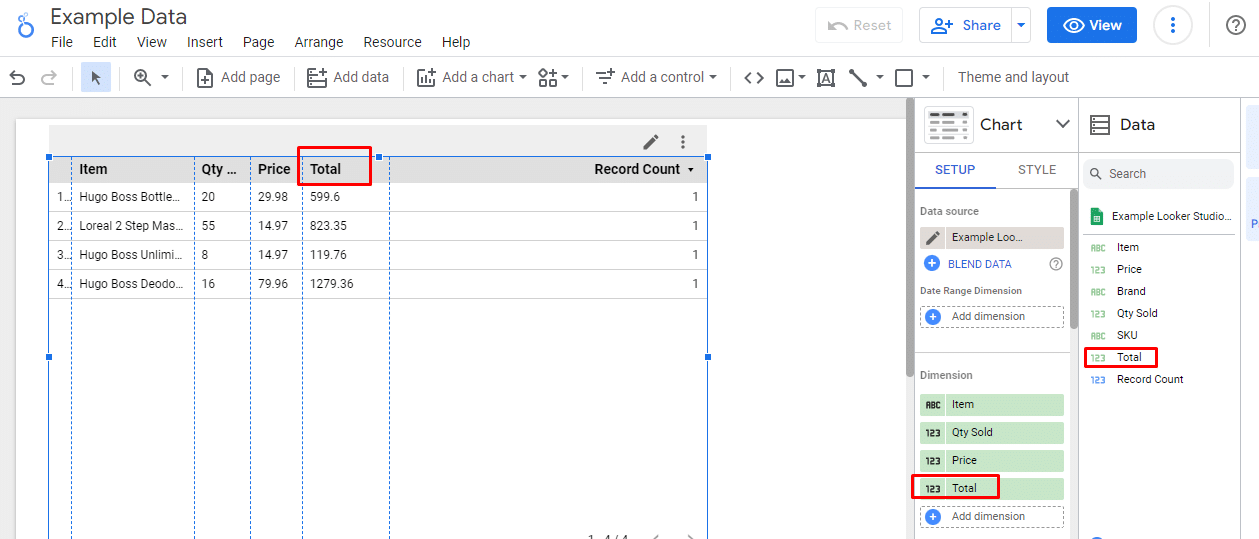
- Click “Save” then “Done” to see your “Total” field under the “Data” section. Drag “Total” to the desired spot in the “Dimension” area on the left. The total product prices will then show up automatically in the table.
How to add regex code for keyword classification
- Create regex code in our tool. First, create new categories and add your keywords. And copy the output.
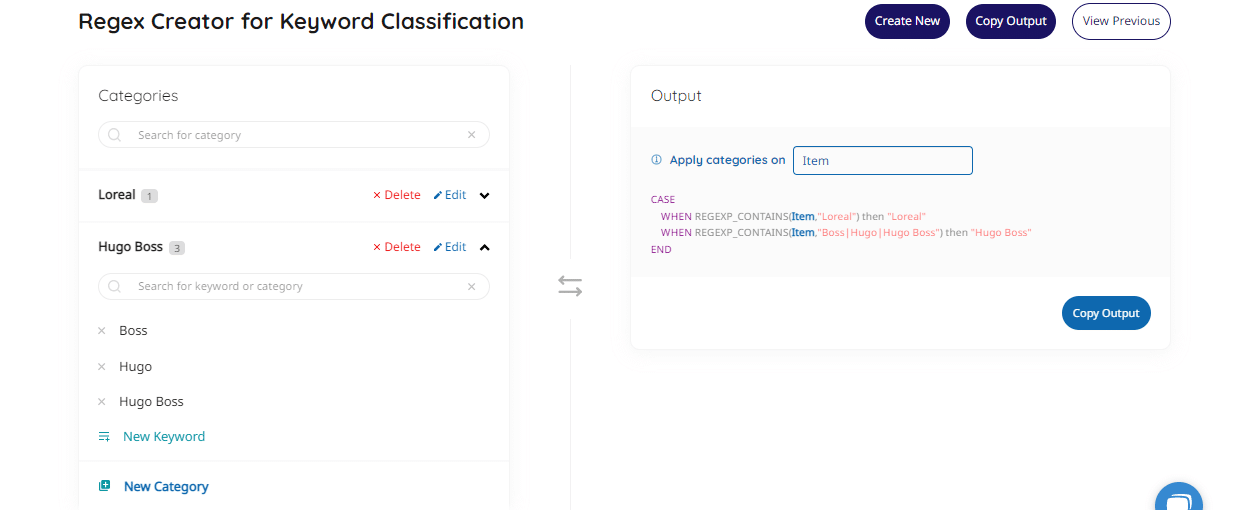
- Now, the “Brand” fields are visible in our data. You can use these to filter, group, or label the data.

- Now, we can see “Brand” fields on our data. You can use these calculated fields to filter, group, label, etc on our data.
Try regex creation for keyword classification
Ever felt overwhelmed with large text data that need categorizing and analyzing? Our free tool can solve this issue. It creates regular expressions to classify keywords in a jiffy. Perfect for anyone, from beginners to experts. So why wait? Give it a try.

